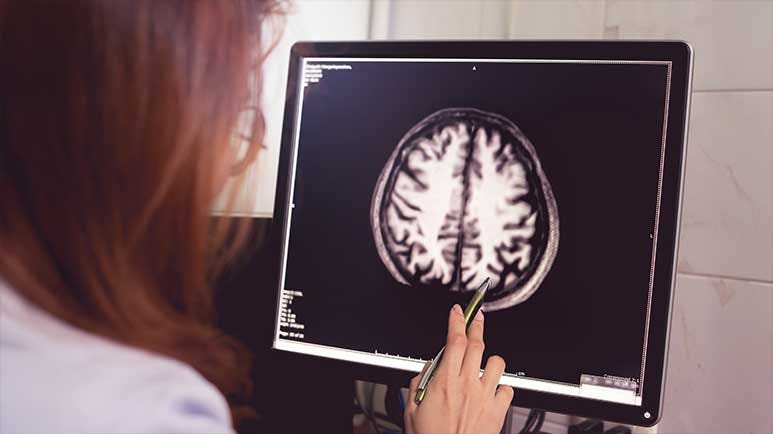Researchers Make a Major Breakthrough in Predicting Neurodegenerative Diseases
Description
STORY AT-A-GLANCE
Acting out dreams during sleep is an early warning sign of Parkinson’s or dementia with Lewy bodies, offering a window for early detection and prevention
Advanced MRI scans now reveal that your brain’s waste-clearing system slows down years before symptoms like tremors, stiffness, or memory loss appear
One study found that people with impaired brain waste clearance were more likely to develop Parkinson’s, while another discovered that excess fluid between brain cells predicted future dementia
These findings show that subtle changes in brain fluid balance — not just loss of dopamine or brain shrinkage — predict who develops neurodegenerative disease and how fast it progresses
Supporting your brain’s “cleaning system” through deep sleep, regular movement, hydration, and toxin avoidance helps protect memory, balance, and mental clarity for life

Each night while you dream, your brain performs one of its most important tasks — cleaning itself. As you enter deep sleep, a hidden network flushes away waste that builds up during the day. But when this system slows down, toxic proteins begin to linger, quietly damaging brain cells years before symptoms ever appear.
One of the earliest clues something’s wrong is a strange sleep disorder that causes people to move, shout, or strike out while dreaming. This condition, known as isolated REM sleep behavior disorder, isn’t just restless sleep — it’s often the first visible sign of a much deeper neurological problem. Research now shows that nearly everyone diagnosed with it eventually develops Parkinson’s disease or dementia with Lewy bodies, both linked to how well your brain clears waste.
Recent advances in brain imaging are uncovering what happens long before tremors, stiffness, or memory loss set in. Scientists are now able to detect subtle changes in brain fluid balance and waste-removal efficiency — signals that your brain’s internal “plumbing” is beginning to fail. These findings are rewriting how we understand the earliest stages of neurodegeneration and opening a new path toward prevention: keeping your brain’s cleaning system working for life.
Brain Scans Reveal Hidden Waste Build-Up Years Before Parkinson’s Symptoms Appear
A study published in Neurology investigated whether brain imaging could detect early warning signs of neurodegeneration in people with isolated REM sleep behavior disorder (iRBD) — a condition known to precede Parkinson’s and related diseases.1
Using a specialized MRI method, the researchers measured how efficiently the brain’s glymphatic system — the waste-clearing network that flushes toxins during sleep — was working. They wanted to know whether problems in this system could predict who would later develop Parkinson’s or dementia with Lewy bodies.
The study involved hundreds of participants across five countries — The research included 250 patients with iRBD and 178 healthy controls recruited from centers in Canada, the U.K., France, and Czechia.
<label class="hide-text" contenteditable="false">Text within this block will maintain its original spacing when published</label>All participants underwent advanced MRI scans and were followed for an average of six years. Among those with iRBD, 65 individuals eventually developed a neurodegenerative disease, most commonly Parkinson’s. Those who converted had distinct MRI patterns showing reduced activity in the brain’s waste-clearing channels — especially on the left side.
Patients with the lowest glymphatic function were twice as likely to develop Parkinson’s — People with the sleep disorder who later developed Parkinson’s showed weaker brain waste clearance, meaning their brains were less effective at washing out toxins during sleep.
<label class="hide-text" contenteditable="false">Text within this block will maintain its original spacing when published</label>This specific pattern did not appear in those who developed dementia with Lewy bodies. In practical terms, this suggests that glymphatic slowdown is more strongly linked to Parkinson’s-type degeneration, giving doctors a measurable way to differentiate between disease pathways years before symptoms emerge.
The left side of the brain appeared more affected than the right, offering clues about early disease progression — Interestingly, the reduction in glymphatic function occurred mainly in the left hemisphere, which mirrors how Parkinson’s often begins asymmetrically — typically affecting one side of the body before the other.
<label class="hide-text" contenteditable="false">Text within this block will maintain its original spacing when published</label>This lateral difference could explain why some people notice tremors or stiffness in only one hand or leg at first. It also shows that early Parkinson’s-related brain changes follow a predictable biological pattern.
Standard MRI scans didn’t catch what this new test did — When researchers compared the new imaging results to regular MRI measures, they saw no clear differences between groups. This means conventional scans weren’t sensitive enough to spot the early waste-clearance problems linked to brain decline. The new method, however, picked up a clear pattern that signaled disease progression.
The Brain’s ‘Cleaning System’ Could Act as a New Diagnostic Frontier
Your glymphatic system, powered by glial cells and cerebrospinal fluid flow, removes toxic proteins that build up in your brain during wakefulness. When this flow is disrupted — especially during sleep — waste products accumulate and trigger inflammation and neuronal death. The study supports the theory that Parkinson’s begins not with dopamine loss alone but with years of poor waste clearance.2
Your brain depends on sleep to take out the trash — and when that process slows, damage begins — Think of your glymphatic system as your brain’s plumbing. During deep sleep, cerebrospinal fluid flows through channels surrounding blood vessels, washing out debris.
<label class="hide-text" contenteditable="false">Text within this block will maintain its original spacing when published</label>When those channels get clogged or slow down, toxins linger, setting the stage for neurodegeneration. According to the researchers, this dysfunction precedes visible symptoms by several years, suggesting that tracking glymphatic health could give people time to intervene before irreversible damage occurs.
<l






